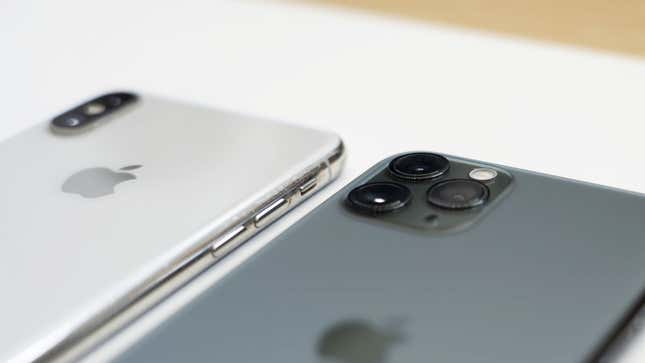
There’s a new (ish) technology in town, one that’s made it to the consumer smartphone market with the arrival of the iPhone 11: ultra-wideband (UWB). What is this tech, which now lurks on the Apple U1 chip? And how is it going to change how you use your phone in the future? Here’s what you need to know.
The basics are that this is a wireless, short-range communication protocol. A bit like Bluetooth, it lets devices talk to each other. You’ll see it appearing in a few headlines now thanks to the launch of the 2019 iPhones, but it’s by no means a technology that’s exclusive to Apple, and it’s actually been around for decades.
Like a lot of technology though, it’s taken a while for ultra-wideband chips to get cheap and compact enough to squash them inside a smartphone. Like Bluetooth, it transmits data across short distances, but its particular party tricks are the ability to precisely determine location, the ability to broadcast with minimal interference, and the ability to run using very little power at all.
As the name suggests, it sends data across a wider frequency—from 500MHz up to several gigahertz—compared with ‘narrowband’ wireless technologies. The drawback is a shorter overall range, but that doesn’t matter so much when you’re dealing with two devices that are in a room together.
What we can’t give you is an exact spec-by-spec breakdown of UWB against Bluetooth and wifi, because several different versions of it exist—and Apple hasn’t revealed exactly how it’s implemented the technology in the iPhone 11. Like wifi, UWB has gone through several 802.11 wireless versions, as defined by the IEEE.
When it comes to Apple and the U1 chip in the new iPhones, we do know it’s going to mean an improved version of AirDrop—better spatial awareness (so it knows where your phone is pointing and where you are), and a more precise and reliable way to communicate with other iPhones that have a U1 chip inside.
“It’s like adding another sense to iPhone, and it’s going to lead to amazing new capabilities,” according to Apple promotional materials. “With U1 and iOS 13, you can point your iPhone toward someone else’s, and AirDrop will prioritize that device so you can share files faster. And that’s just the beginning.”
That hints at more to come—most probably those Apple device-tracking tags that have been rumored for months. Where UWB has the advantage over wifi and Bluetooth (used in Tile tags) is that it can measure distance based on the time it takes for radio waves to travel between devices.
Bluetooth can measure distances, but it does it by assessing the strength of a signal between two devices, and calculating how far away the two gadgets are based on that. It’s not the most reliable approach (signal strength can be affected by more than just distance), and UWB’s way of timing radio waves is much more accurate.
The short pulses used by ultra-wideband are less prone to interference and noise and are less likely to overlap with one another. All this helps when you want accuracy and reliability to be priorities, whatever you’re transmitting or measuring. Those kinds of features might be deployed in smart home devices, for instance, maybe when you want to adjust the output of a speaker set based on where you’re sitting.
Another area we might see ultra-wideband utilized in iPhones is with augmented reality. A better sense of where your phone is in a room, and what it’s pointed towards, could help improve the immersiveness of digital overlays and experiences, especially if you’re trying to use multiple (U1-toting) iOS devices together.
As we’ve said though, UWB isn’t exclusive to Apple. The tech could potentially be used in everything from wireless printers to streaming video, depending on which way the market moves—cost and compatibility have previously been factors in preventing widespread adoption of ultra-wideband, but they might not be such a problem in the future.
All this depends on manufacturers getting on board with the tech and possibly finding that ‘killer app’ or function that makes it worth putting UWB inside every phone that rolls off the production line, iPhone or otherwise.
Applications like keyless entry and indoor location mapping are now back on the table for ultra-wideband, and having the standard built into a device as ubiquitous as the iPhone can only help its chances of becoming more commonly used in the future. It doesn’t necessarily have to replace wifi, NFC, or Bluetooth—it can work with them.